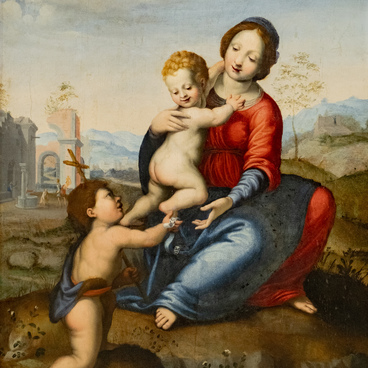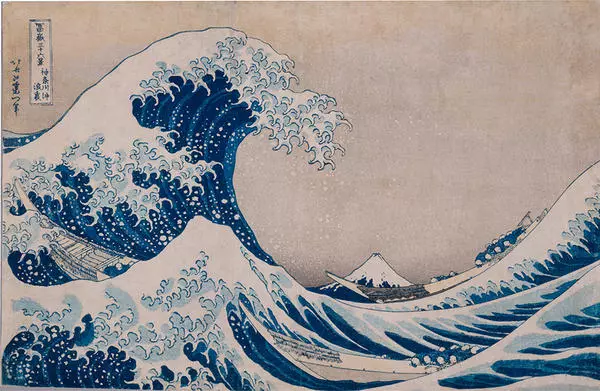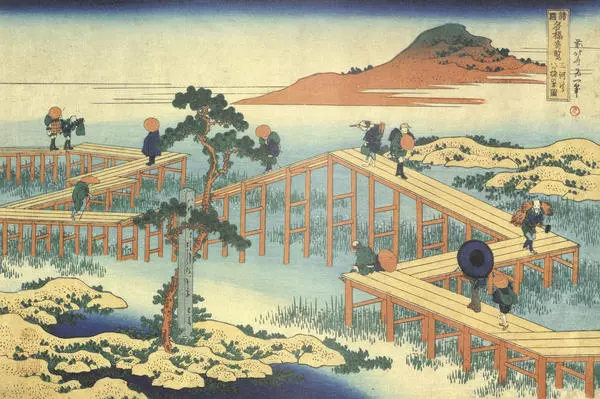The collection of the Sakha Republic National Art Museum includes the engraving “Mountain Pass in Kosyu” from the series “Thirty-Six Views of Mount Fuji” (9th sheet), made in the style of ukiyo-e (“floating world”) by the famous artist Katsushika Hokusai.
The plot centers on small travelers walking slowly through a mountain pass. In the distance, the blue cone of the sacred Mount Fuji can be seen, with patches of lingering snow. The contours of the images are drawn in blue. The composition of the engraving is a harmonious combination of traditional Japanese print style and Western techniques of perspective.
Katsushika Hokusai (1760–1849) was a great Japanese ukiyo-e artist, draftsman, illustrator, and engraver of the Edo period, the final period of Japanese woodblock printing. The artist lived a long life, constantly changed his place of residence and pseudonym, and was married twice. Katsushika Hokusai was highly productive and left behind up to 30,000 engravings, sketches, paintings, and illustrations signed with different names. From 1796, the artist began to use the pseudonym Hokusai, which later became widely known. His talent was exceptionally versatile. He was not only an artist, but also a novelist, poet, and a highly educated person. He deeply studied the ancient cultures of China and Japan. He was familiar with European engraving, methods of European art and many scientific achievements of his time. He worked in different styles, utilized a European perspective, and came up with many new compositional techniques.
The artist’s most famous series is “Thirty-Six Views of Mount Fuji.” Hokusai began making the first sketches for this series in 1830. In the preface to his book “100 Views of Mount Fuji, ” he wrote that nothing he had created in the previous 70 years could compare with them. Initially, he planned to publish 36 prints, but at the end of 1830, the publishing house announced plans to release more than 100 new views of Mount Fuji. However, only ten additional prints were published, so the series consists of only 46 sheets.
Katsushika Hokusai incorporated the famous mountain
into his prints as an indispensable participant in the events of the daily life
of the Japanese people. That’s why in this series of engravings he depicted not
just a landscape with Mount Fuji, but integrated human figures into the
scenery. In the history of the Japanese landscape, the series “Thirty-Six Views
of Mount Fuji” has become the pinnacle of artistic excellence.








